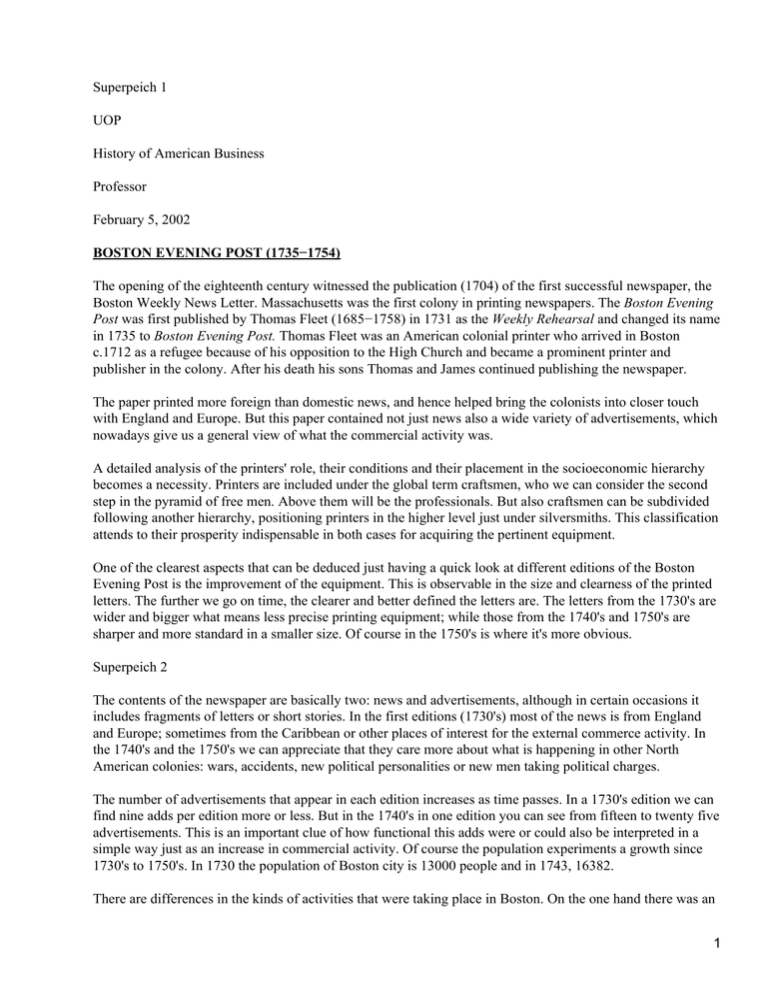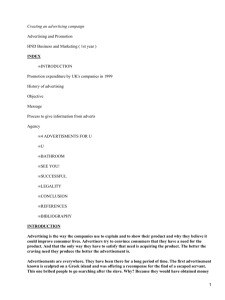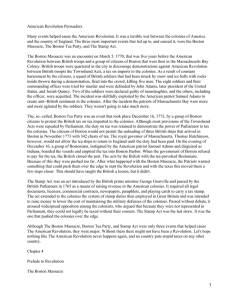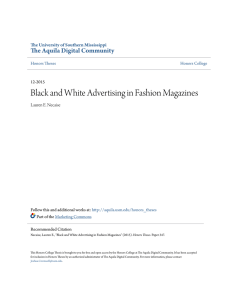American Business
Anuncio

Superpeich 1 UOP History of American Business Professor February 5, 2002 BOSTON EVENING POST (1735−1754) The opening of the eighteenth century witnessed the publication (1704) of the first successful newspaper, the Boston Weekly News Letter. Massachusetts was the first colony in printing newspapers. The Boston Evening Post was first published by Thomas Fleet (1685−1758) in 1731 as the Weekly Rehearsal and changed its name in 1735 to Boston Evening Post. Thomas Fleet was an American colonial printer who arrived in Boston c.1712 as a refugee because of his opposition to the High Church and became a prominent printer and publisher in the colony. After his death his sons Thomas and James continued publishing the newspaper. The paper printed more foreign than domestic news, and hence helped bring the colonists into closer touch with England and Europe. But this paper contained not just news also a wide variety of advertisements, which nowadays give us a general view of what the commercial activity was. A detailed analysis of the printers' role, their conditions and their placement in the socioeconomic hierarchy becomes a necessity. Printers are included under the global term craftsmen, who we can consider the second step in the pyramid of free men. Above them will be the professionals. But also craftsmen can be subdivided following another hierarchy, positioning printers in the higher level just under silversmiths. This classification attends to their prosperity indispensable in both cases for acquiring the pertinent equipment. One of the clearest aspects that can be deduced just having a quick look at different editions of the Boston Evening Post is the improvement of the equipment. This is observable in the size and clearness of the printed letters. The further we go on time, the clearer and better defined the letters are. The letters from the 1730's are wider and bigger what means less precise printing equipment; while those from the 1740's and 1750's are sharper and more standard in a smaller size. Of course in the 1750's is where it's more obvious. Superpeich 2 The contents of the newspaper are basically two: news and advertisements, although in certain occasions it includes fragments of letters or short stories. In the first editions (1730's) most of the news is from England and Europe; sometimes from the Caribbean or other places of interest for the external commerce activity. In the 1740's and the 1750's we can appreciate that they care more about what is happening in other North American colonies: wars, accidents, new political personalities or new men taking political charges. The number of advertisements that appear in each edition increases as time passes. In a 1730's edition we can find nine adds per edition more or less. But in the 1740's in one edition you can see from fifteen to twenty five advertisements. This is an important clue of how functional this adds were or could also be interpreted in a simple way just as an increase in commercial activity. Of course the population experiments a growth since 1730's to 1750's. In 1730 the population of Boston city is 13000 people and in 1743, 16382. There are differences in the kinds of activities that were taking place in Boston. On the one hand there was an 1 external commerce activity, which in the papers is reflected. In the newspapers we can find announcements of ships arriving and what goods they bring with them. This imported goods had a high demand in the colonist society because most of them couldn't be founded in the colonies where the manufacturers were not progressing as much as in England or Europe. The key of this fact is that England imported the necessary resources and manufactured them. Then, it exported the manufactured goods. This is going to be an important explanation to understand the British industrial improvement. Another important issue when a ship was coming is that it brought fresh news from other parts of the world. The population of the colonies was really international and was always hungry of knowing what was happening in places like Europe. We must not forget that the Eighteenth century in Europe is a period of intellectual and commercial progress and the upper class of the British North American colonies don't want to be apart of this progress. Back in what now concerns, the other kind of contents in this newspaper is the advertisements. There are different kinds attending to what they advertise. If we look at the content we can divided in three: sales, renting and vendues' announcements. Since Superpeich 3 the 1740's we will also find advertisements calling people to pay their debts within other persons. In the edition of 24 September 1744 there is one that has especially called my attention which is signed with a hand a says: Those in arrear for this paper, are again desired to make speed Payment; the Publisher reading nothing more than to meet the approaching Winter with an empty Purse. This gives us the idea that it was something usual not to pay for the advertisements or delay the payment. It can be interpreted as an exaggeration or perhaps it is true that they were in economic problems. All advertisements cost money; that is clearly specified at the bottom of the page: Where advertisements are taken in at a moderate price. In the 1750's editions the advertisements are going to be quite different. They are more political or of civil action. There is, for example, an appointment for all proprietors of the township of New Boston to act upon matters of property, land division and all other matters that may be for the Benefit of said Township (12 August, 1754). There is another one in this same edition that can be useful as another example, which says that my wife hath eloped from me, and therefore I will not pay any debts that she shall contract. But these are not the only kind of advertisements we find, there are still sales: English goods, ships and different articles. Sales are going o be a constant in the advertisements. In the 1730's the goods for sale are on the one hand houses, farms and wharfs. On the other hand there are imported goods like vinegar, spinets and also Negroes. These Negroes that can be men, women or children, are usually on sale for a certain activity: country labors or households. Business was supposed to be a matter of men, but we can see some women labors. In this case what I've seen is an advertisement of a woman that washes and finishes gloves; some kind of female tailor. The fact that she works could mean that she is a widow and has economic problems. She might not be a wealthy person; if she were, she wouldn't work. In the 1740's advertisements increase tremendously. In my opinion this means they have good results. In this decade we can find houses, wharfs, furniture, shops, for sale. Negroes are still part of the market goods, and there are even more advertisements offering them. This fact has many interpretations. It could be because they are runaways Negroes. In the case of children could be because the owner cannot afford so many slaves Superpeich 4 or doesn't want the Negro mother to waist working time taking care of her children. Many hypotheses can be derived from this. It is in the 1740's when we start seeing new type of adds which just announce a replacement of a certain shop (liquor shop) and callings to those who have any demand or must return something to someone. 2 As a conclusion we can say that Printers were the corner stone of the internal commerce activity. Their publications kept the activity alive and gave it dynamism. We must not think that this activity was neither fast neither immediate; some of the advertisements can be seen in at least four editions, what means a month. They didn't work as shops but they helped the commerce activity. Perhaps the most interesting thing of these newspapers is the information that provides us nowadays, what permits us guessing how life was in these international towns of the Eighteenth century. 3



